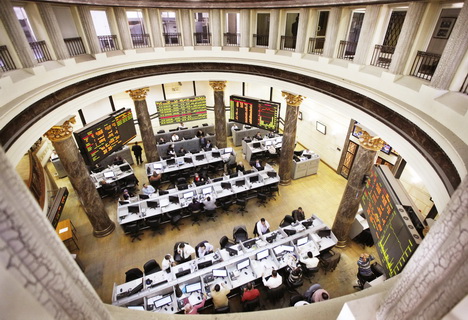The country aspires to have an energy sector which meets national sustainable development requirements, while maximising the efficient use of various traditional and renewable resources contributing to economic growth, competitiveness, achieving social justice, and preserving the environment.
To find out the sector’s latest updates, Daily News Egypt interviewed Walid Sheta, Schneider Electric’s Regional Cluster head of North East Africa and Levant, the transcript for which is below, lightly edited for clarity:
What are the new megaprojects the company is participating in, in Egypt?
Schneider Electric Egypt is working together with the Egyptian government in several major national projects. We have offered our smart energy management solutions in two power plants in Assiut Governorate.
Schneider Electric is effectively contributing to achieving the country’s strategy to meet 20% of its energy needs from renewable sources by 2020. We have been part of building wind farms in the Gulf of Suez and the Solar Benban complex in southern Egypt.
Schneider Electric is also taking part in the construction of the New Administrative Capital, east of Cairo, a key national project to turn 1.5m feddan of desert area into agricultural land, the giant Zohr gas field, as well the development of an industrial and logistics hub in the Suez Canal area.
We are also participating in the strong desalination effort to bring the desalination of the sea water capacity of to 2.5bn cubic metres a day. We contributed through supplying state-of-the-art control systems, and electrical distribution equipment to main desalination plants in the country.
We have offered smart energy optimisation solutions at a number of water desalination plants.
Additionally, Schneider Electric Egypt has been working to develop a national charging infrastructure for electric vehicles, by setting up charging points at a few state-run gas stations countrywide.
What are the new products the company intends to launch in Egypt soon?
The most important set of new products are mainly linked with digitisation of our industry, through the comprehensive EcoStruxure platform, which aims to obtain the most from each installation, factory, building, city, making it more efficient, safe, green, and reliable.
I am proud to say most of the products are developed or adapted by our Egyptian engineers.
Schneider Electric considers Egypt its regional hub in North Africa and the Levant. We have offered a range of our latest energy and automation solutions in Egypt in recent months, and soon plan to launch high-quality gas insulated switchgears which are entirely manufactured in Egypt by applying quality standards adopted in France.
What are the company’s expansion plans in Egypt?
We have embarked on a plan to scale up our business in Egypt to catch up with an ambitious development drive by the Egyptian government, which involves several national megaprojects. We increased the capacity of our production in Badr City, that is currently doubling its capacity. We also moved our distribution centre to a brand-new facility that is already working, which will be formally inaugurated before year’s end.
Do you plan to expand the production capacity at your plants in Egypt?
We aim to double the capacity of our regional plant in Badr City. It is Schneider Electric’s largest electric distribution panel plant. This mirrors the confidence we have in Egypt’s economic growth rates in the near future.
Are you in any discussions with the government to provide technology for the New Administrative Capital?
Taking part in the construction of the New Administrative Capital marks the beginning of building smart cities in Egypt. Schneider Electric is providing energy management and automation solutions to integrate smart technology within the city.
Schneider Electric has been working together with the Ministry of Communications and Information Technology to build a Knowledge City at the New Capital east of Cairo. Schneider Electric is providing its innovative IoT-enabled EcoStruxure operating technologies to build smart, sustainable and efficient buildings, and enable implement city digitalisation strategies.
The Ministry of Housing intends to work together with Schneider Electric in the seawater desalination and sewage treatment plants. What are the developments regarding this issue?
We have been working together with the Housing Ministry in a number of seawater desalination and water treatment projects. Schneider Electric was involved in building the Yosr seawater desalination plant in Hurghada, which is the biggest in East Africa, as well as a number of stations in Al-Jalala City and the New Alamein City.
Do you have plans to invest in the Suez Canal development project?
We have been part of a number of projects in the Suez Canal Economic Zone megaproject. This includes the digging of new tunnels in the cities of Port Said and Ismailia.
How many electric vehicles’ charging points has the company installed to-date? What are the expected number of charging points by 2020?
Schneider Electric is planning to build 65 charging sites across seven Egyptian governorates, with the figure estimated to double over the next few years. The drive is aimed to boost local charging infrastructure which would encourage drivers to switch to electric cars, and promote mainstream acceptance of these types of vehicles.
Regarding Schneider Electric’s participation in the Benban Solar Park project, are there any short-term plans to increase the company’s investments in the renewable energy sector?
The energy sector has the lion’s share of our investments in Egypt. We are effectively contributing towards achieving Egypt’s strategy to meet 20% of its energy needs from renewable sources by 2020 through offering multiple solutions to transfer energy from renewable power stations, and linking them to power grids, including wind farms in the Gulf of Suez and the Solar Benban complex in southern Egypt.







